1/5




Compound Paracetamol Infusion & Paracetamol Injection Paracetamol
$1.00 / Pieces
- FOB Price:
- Negotiable | Get Latest Price
- Order Quantity:
- 1 Set / Sets
- Supply Ability:
- 1000 Set / Sets per Month
- Port:
- shanghai
- Payment Terms:
- T/T L/C D/P D/A Credit Card PayPal Cash Escrow Other
- Delivery Detail:
- 5 days
Hot in store
-

Medical Supply Stomach Tube for High Qua
$1.00 -

Disposable Precision Collecting Urine Ba
$1.00 -

Red Blue Elastic Wrinkle Bandage Non-Wov
$1.00 -

Disposable Sterile Blood Collection Need
$1.00 -

Non-Woven Small Medicine Bag Plastic Pap
$1.00 -

HIV Test Rapid Test Kit HIV Home Test Ki
$1.00 -

Disposable Medical Sterile Cotton Bandag
Inquiry -

Disposable Scalp Needle Disposable Intra
$1.00
Product Details
Product Name: Compound Paracetamol Infusion & Paracetamol Injection Paracetamol Model NO.: 300mg, 750mg Pharmaceutical Technology: Chemical Synthesis Type: Biological Products Shape: Liquid State: Liquid Suitable for: Elderly, Adult Usage Mode: I.M. Application: Surgery Delivery Deadline: 35days Export: for Export Use only Trademark: TAOLIGHT PHARMA Transport Package: 5ampx5ml/Box Specification: 750ml: 5ml Origin: China HS Code: 3004909099 Product Description 1. Name of the medicinal productParacetamol injection2. Qualitative and quantitative compositionActive Ingredients:Paracetamol750mg/5mlFor excipients see section 6.13. Pharmaceutical formTablet for oral administration.4. Clinical particulars4.1 Therapeutic indicationsFor the treatment of mild to moderate pain including headache, migraine, neuralgia, toothache, sore throat, period pains, aches and pains, symptomatic relief of rheumatic aches and pains and of influenza, feverishness and feverish colds.4.2 Posology and method of administrationAdults, the elderly and young persons 16 years and over:2 tablets every 4 hours to a maximum of 8 tablets in 24 hours.Children 6 - 9 years:½ tablet every 4 hours to a maximum of 4 doses in 24 hours.Children 10 - 11 years:1 tablet every 4 hours to a maximum of 4 doses in 24 hoursAdolescents 12 - 15 years:1 to 1 ½ tablets every 4 hours to a maximum of 4 doses in 24 hoursDo not give to children aged under 6 years of age.4.3 ContraindicationsHypersensitivity to paracetamol or any of the constituents.4.4 Special warnings and precautions for useCare is advised in the administration of paracetamol to patients with severe renal or severe hepatic impairment. The hazards of overdose are greater in those with non-cirrhotic alcoholic liver disease.Do not take more medicine than the label tells you to. If you do not get better, talk to your doctor.Contains Paracetamol.Do not take anything else containing paracetamol while taking this medicine.Talk to your doctor at once if you take too much of this medicine, even if you feel well. This is because too much paracetamol can cause delayed, serious liver damage.Patients should be advised that paracetamol may cause severe skin reactions. If a skin reaction such as skin reddening, blisters, or rash occurs, they should stop use and seek medical assistance right away.4.5 Interaction with other medicinal products and other forms of interactionCholestyramine: The speed of absorption of paracetamol is reduced by cholestyramine. Therefore, the cholestyramine should not be taken within one hour if maximal analgesia is required.Metoclopramide and Domperidone: The absorption of paracetamol is increased by metoclopramide and domperidone. However, concurrent use need not be avoided.Warfarin: The anticoagulant effect of warfarin and other coumarins may be enhanced by prolonged regular use of paracetamol with increased risk of bleeding; occasional doses have no significant effect.Chloramphenicol: Increased plasma concentration of chloramphenicol.4.6 Pregnancy and lactationEpidemiological studies in human pregnancy have shown no ill effects due to paracetamol used in the recommended dosage, but patients should follow the advice of the doctor regarding its use.Paracetamol is excreted in breast milk but not in a clinically significant amount. Available published data do not contraindicate breast feeding.4.7 Effects on ability to drive and use machinesNone known.4.8 Undesirable effectsAdverse effects of paracetamol are rare. Very rare cases of serious skin reactions have been reported. There have been reports of blood dyscrasias including thrombocytopenia purpura, methaemoglobenaemia and agranulocytosis, but these were not necessarily causality related to paracetamol.Reporting of suspected adverse reactionsReporting suspected adverse reactions after authorisation of the medicinal product is important. It allows continued monitoring of the benefit/risk balance of the medicinal product. Healthcare professionals are asked to report any suspected adverse reactions via the Yellow Card Scheme at www.mhra.gov.uk/yellowcard.4.9 OverdoseLiver damage is possible in adults who have taken 10g or more of paracetamol. Ingestion of 5g or more of paracetamol may lead to liver damage if the patient has risk factors (see below).Risk FactorsIf the patienta) Is on long term treatment with carbamazepine, phenobarbitone, phenytoin, primidone, rifampicin, St John's Wort or other drugs that induce liver enzymes.Orb) Regularly consumes ethanol in excess of recommended amounts.Orc) Is likely to be glutathione deplete e.g. eating disorders, cystic fibrosis, HIV infection, starvation, cachexia.SymptomsSymptoms of paracetamol overdosage in the first 24 hours are pallor, nausea, vomiting, anorexia and abdominal pain. Liver damage may become apparent 12 to 48 hours after ingestion. Abnormalities of glucose metabolism and metabolic acidosis may occur. In severe poisoning, hepatic failure may progress to encephalopathy, haemorrhage, hypoglycaemia, cerebral oedema, and death. Acute renal failure with acute tubular necrosis, strongly suggested by loin pain, haematuria and proteinuria, may develop even in the absence of severe liver damage. Cardiac arrhythmias and pancreatitis have been reported.ManagementImmediate treatment is essential in the management of paracetamol overdose. Despite a lack of significant early symptoms, patients should be referred to hospital urgently for immediate medical attention. Symptoms may be limited to nausea or vomiting and may not reflect the severity of overdose or the risk of organ damage. Management should be in accordance with established treatment guidelines, see BNF overdose section.Treatment with activated charcoal should be considered if the overdose has been taken within 1 hour. Plasma paracetamol concentration should be measured at 4 hours or later after ingestion (earlier concentrations are unreliable).Treatment with N-acetylcysteine may be used up to 24 hours after ingestion of paracetamol however, the maximum protective effect is obtained up to 8 hours post ingestion.If required the patient should be given intravenous-N-acetylcysteine, in line with the established dosage schedule. If vomiting is not a problem, oral methionine may be a suitable alternative for remote areas, outside hospital.Management of patients who present with serious hepatic dysfunction beyond 24 hours from ingestion should be discussed with the NPIS or a liver unit.5. Pharmacological properties5.1 Pharmacodynamic propertiesMechanisms of Action/EffectAnalgesic - the mechanism of analgesic action has not been fully determined. Paracetamol may act predominantly by inhibiting prostaglandin synthesis in the central nervous system (CNS) and to a lesser extent, through a peripheral action by blocking pain-impulse generation.The peripheral action may also be due to inhibition of prostaglandin synthesis or to inhibition of the synthesis or actions of other substances that sensitise pain receptors to mechanical or chemical stimulation.Antipyretic - paracetamol probably produces antipyresis by acting centrally on the hypothalamic heat-regulation centre to produce peripheral vasodilation resulting in increased blood flow through the skin, sweating and heat loss. The central action probably involves inhibition of prostaglandin synthesis in the hypothalamus.5.2 Pharmacokinetic propertiesAbsorption and FateParacetamol is readily absorbed from the gastro-intestinal tract with peak plasma concentrations occurring about 30 minutes to 2 hours after ingestion. It is metabolised in the liver and excreted in the urine mainly as the glucuronide and sulfate conjugates. Less than 5% is excreted as unchanged paracetamol. The elimination half-life varies from about 1 to 4 hours. Plasma-protein binding is negligible at usual therapeutic concentrations but increases with increasing concentrations.A minor hydroxylated metabolite which is usually produced in very small amounts by mixed-function oxidases in the liver and which is usually detoxified by conjugation with liver glutathione may accumulate following paracetamol overdosage and cause liver damage.5.3 Preclinical safety dataNone stated6. Pharmaceutical particulars6.1 List of excipientsCroscarmellose SodiumPovidonePregelatinised Maize StarchHydroxypropyl MethylcellulosePolyethylene Glycol6.2 IncompatibilitiesNone known.6.3 Shelf lifeAll packs 5 years except paper/polythene/laminate and paper/polythene strips - 3 years.6.4 Special precautions for storageDo not store above 25°C.for Export use only
Contact with Supplier
Recommend product
-

Stripped Soft Goose Fe
$3.00 -
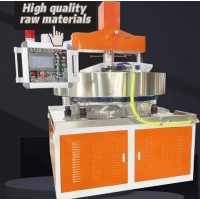
plastic ball grinding
$30000.00 -
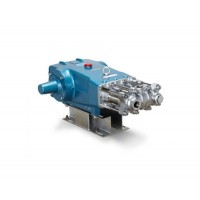
CAT piston pump 281
$4000.00 -
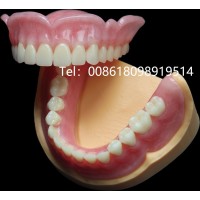
Droichead Zirconia Plu
$10.00 -
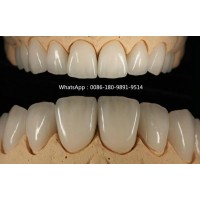
E.max crown, Veneer, I
Inquiry -
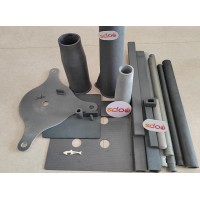
ReSiC Beams/plates/bur
$16.00 -
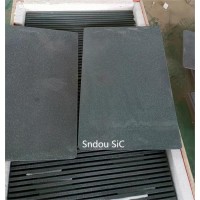
RSiC Slabs Boards Tile
$15.00 -

RSiC Batts as Kiln she
$15.00 -
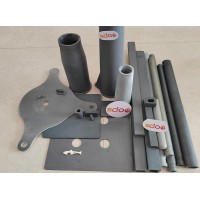
RSiC Tube by recrystal
$10.00 -

RSiC Kiln Furniture (B
$16.00 -
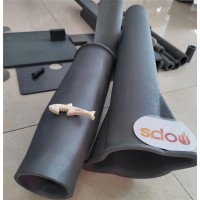
RSiC Burner Nozzle Fla
$18.00 -

RSiC Beam Support Pill
$16.00 -

RSiC plate Slab Board
$15.00 -

NSiC Tube Pipes by Nit
Inquiry -

used excavator hudraul
$16600.00 -
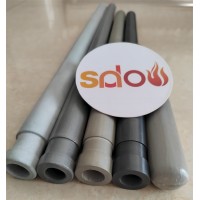
NSiC Thermocouple Prot
Inquiry -

Stalk Riser Tube for L
Inquiry -

NSiC Ceramic Heater Pr
Inquiry -

RSiC NSiC Ceramic Kiln
Inquiry -

used excavator hudraul
$11500.00
Product parameters
closure
This shop is operated by agent
- Set up shop
- Authorized by Manufacturers & Suppliers online marketplace B2B platform GongWong.com, can provide agency service
- Service Introduction
- Authorized product, Internet cloud promotion service integrating certification promotion and procurement inquiry
- Intelligent website construction
- PC terminal + mobile terminal, create a cost-effective corporate website!
closure